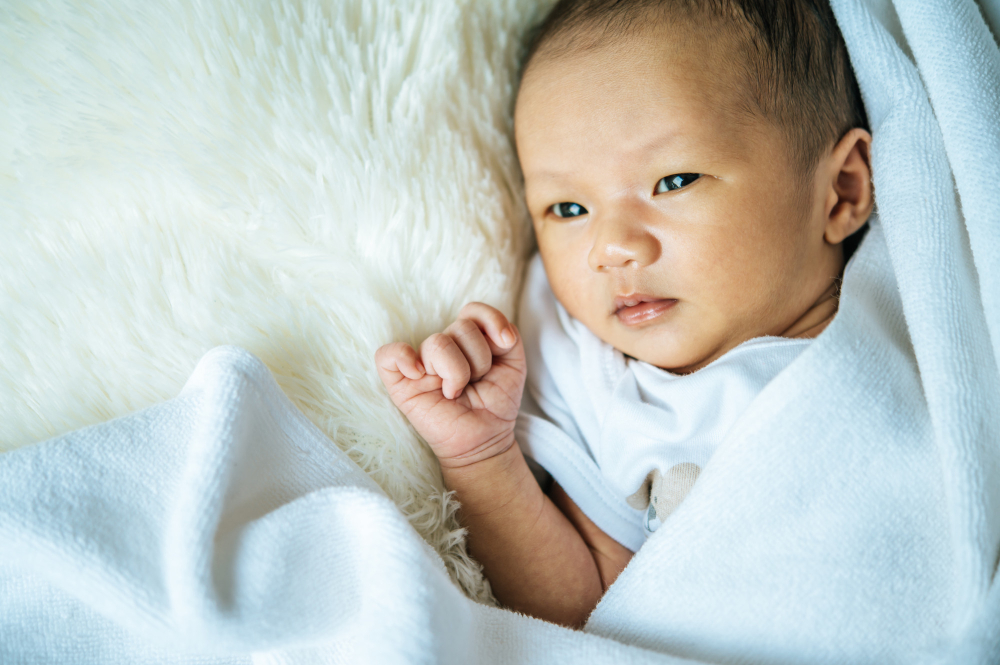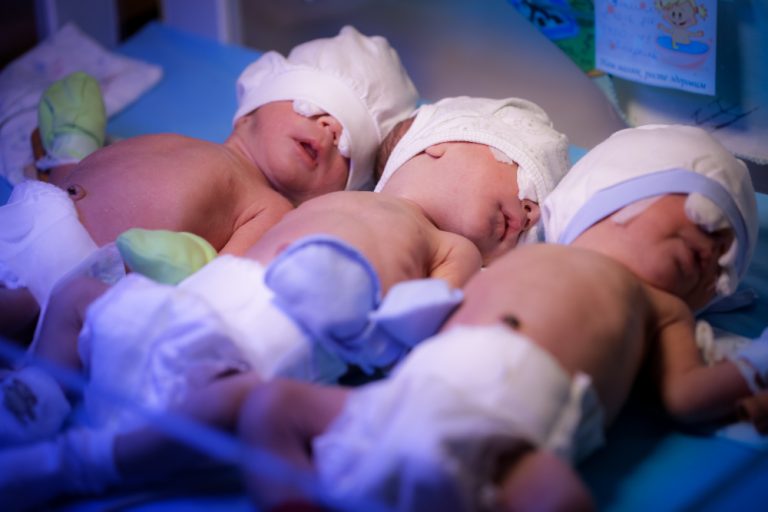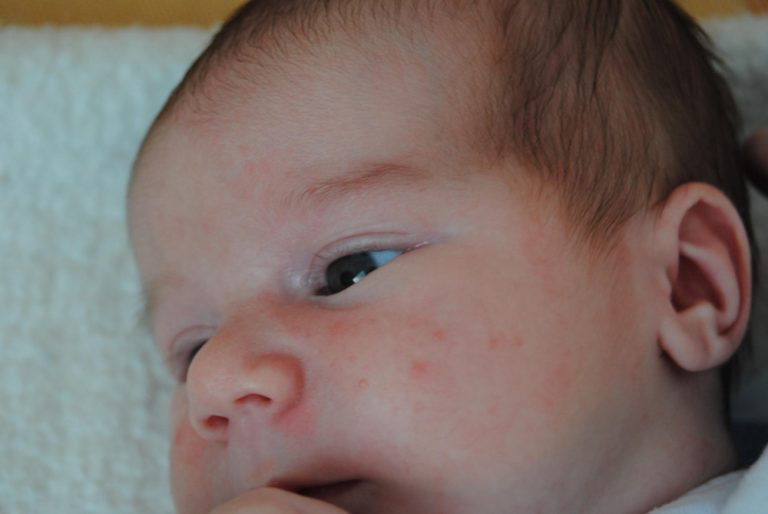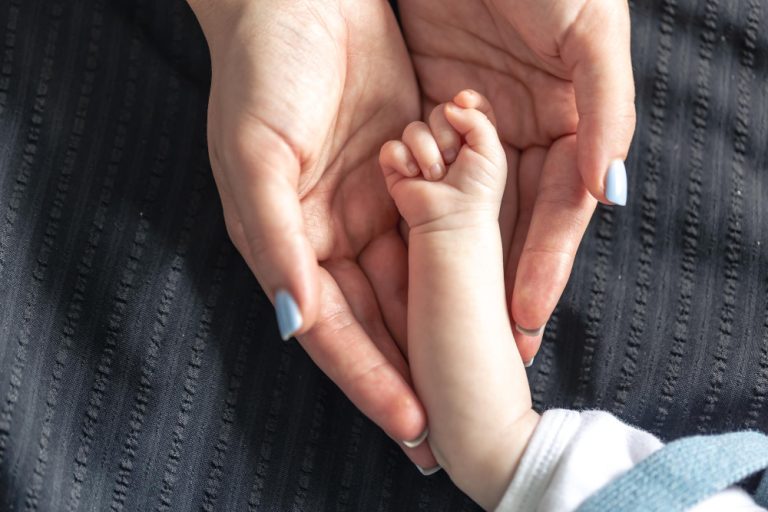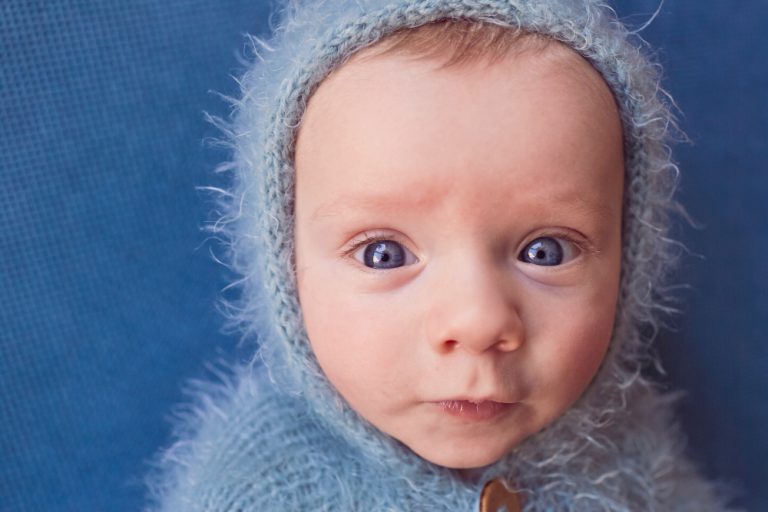At What Range Can A Newborn See Clearly? Developing Vision
Have you ever wondered how the world appears to your little one, seeing it for the first time through their developing vision? Imagine the magic of discovering an entirely new universe of colors, shapes, and wonders each time they open those little eyes. As parents, it’s fascinating and essential to understand the progress and milestones in your baby’s visual journey to ensure their healthy eyesight. In this blog, “At What Range Can A Newborn See Clearly? Developing Vision,” we take a deep dive into the enchanting realm of infant visual development.
From those initial blurry blinks to the monthly milestones, we’ll uncover everything you need to know about your baby’s visual journey. Are you curious about your baby’s developing visual world? Let’s explore it together! Stay tuned for valuable insights and expert guidance to help you nurture your little one’s precious eyesight. Get ready for an exciting journey of discovering the wonders of your baby’s developing vision. Here’s a sneak peek at what we’ll be covering:
- Discover when newborns transition from fuzzy vision to clear sight
- Unravel the range of visual abilities your baby possesses in their early months
- Gain insights into the essential milestones that mark your baby’s visual progression
- Learn key tips on how to support and nurture your baby’s growing eyesight
- Recognize potential signs of vision issues in newborns and young infants
At What Range Can A Newborn See Clearly?
Welcome to the fascinating world of your baby’s developing vision! Understanding the milestones and progress in their visual abilities is crucial for a parent’s role in supporting their child’s healthy eyesight. From their first blinks to monthly achievements, this article aims to provide valuable insights into your baby’s journey of visual development.
As a newborn, your baby’s vision starts off blurry, but it rapidly progresses in the first few months of life. By understanding when newborns begin to see clearly, you can actively participate in their visual stimulation and ensure their optimal eye health.
During the early stages, your baby’s vision may seem limited, but each new month brings significant improvements in their visual abilities. From perceiving shapes and colors to recognizing familiar faces and objects, their exploration of the world through their eyes is truly remarkable.
It’s important to remember that every baby’s visual development follows different patterns, but there are general guidelines we can explore together. By staying informed and observant, you can identify potential vision problems early on and seek appropriate professional guidance.
In the upcoming sections, we will delve into the specific milestones and stages of your baby’s visual development, along with practical tips on how to support and promote healthy eyesight. So let’s venture on this journey of discovery together and empower you with knowledge about your baby’s developing vision.
When Do Newborns Start to See?
Newborns’ vision undergoes significant development in their early months of life. While their vision starts off blurry, they rapidly progress and begin to see more clearly. It is important for parents to understand the milestones and stages of their baby’s visual development.
Initial Stages of Newborns’ Vision
In the first few weeks of life, newborns have limited visual acuity. They can see objects that are within 8 to 12 inches from their face, which conveniently allows them to focus on and bond with their caregiver’s face. Their vision is still somewhat blurry, and they primarily rely on their sense of touch and hearing to navigate the world around them.
Developing Ability to Focus
At around one month of age, newborns start to exhibit better control over their eye movements and show signs of focusing on objects. Initially, they may use a single point as a fixation target, which may be their own hand or a nearby object. This is an exciting milestone as it indicates that their visual system is maturing.
Range of Clear Vision
By approximately two to three months of age, newborns’ vision improves further, allowing them to see objects at a distance of around 8 to 15 feet. Their visual acuity continues to develop, and they become more adept at tracking moving objects with their eyes.
Supporting Newborns’ Developing Vision
To support your baby’s visual development, it is important to provide them with visually stimulating environments. Use high-contrast patterns and bright colors to capture their attention. Additionally, engage in activities that encourage eye-tracking, such as gently moving objects in front of their eyes.
Remember, each child’s development is unique, and some may reach these milestones earlier or later than others. If you have concerns about your baby’s vision or notice any signs of potential vision problems, consult a pediatric eye care specialist for further evaluation.
By understanding the initial stages of newborns’ vision, parents can boost their baby’s visual development and provide appropriate support as they undertake their journey of exploring the world through their eyes.
Birth to 4 Months: Blurry View
During the first four months of their life, newborns’ vision is still developing, and their view of the world is quite blurry. However, they are capable of perceiving some shapes and colors. Let’s explore the visual milestones that occur during this crucial stage of visual development.
Developing Visual Acuity
Newborns are born with limited visual acuity, meaning their ability to see fine details is not fully developed. They primarily focus on objects that are 8-12 inches away from their face, which is around the distance from their face to a parent’s face during feeding or cuddling. This proximity allows them to see and focus on familiar faces, providing them with a sense of comfort and connection.
Sensitivity to Light and Movement
At this stage, newborns are highly sensitive to light. They may have a reflex called the “Moro reflex,” which causes them to startle and spread or fling their arms and legs when exposed to sudden changes in light or movement. This reflex helps them detect and respond to their environment, even though their visual perception is still developing.
Perception of Shapes and Colors
While their vision is still blurry, newborns can distinguish between light and dark contrasts. They start to show preference for high-contrast objects, such as black and white patterns. Bold patterns and distinct shapes engage their attention, as they are more easily detectable in their blurry visual field.
Developing Color Vision
Although newborns’ color vision is initially limited, they gradually begin to perceive a broader range of colors over the first few months. Starting with high-contrast black-and-white patterns, they progressively develop the ability to differentiate between primary colors. Introducing colorful toys or objects with vivid hues can stimulate their visual senses and aid in their color perception.
Tracking Moving Objects
Another important visual milestone during this period is the ability to track moving objects with their eyes. Newborns may begin to follow objects or people with their gaze, showing an emerging ability to visually track movement. Parents can support this development by gently moving objects or toys within their field of vision, encouraging their eye muscles to engage and track the motion.
In summary, during the first four months of their life, babies gradually progress in their visual development. While their vision still remains blurry, they become more sensitive to light, develop a preference for high-contrast patterns, and start perceiving a wider range of colors. Engaging with them through visually stimulating objects and supporting their eye-tracking abilities can help enhance their visual development during this crucial stage.
5 to 8 Months: Recognition
During the period of 5 to 8 months, your baby’s visual development takes significant strides as they start recognizing familiar faces and objects. Their ability to perceive and remember visual information becomes more refined, allowing for better recognition and comprehension of their surroundings.
Recognizing Familiar Faces
By this stage, your baby will be able to recognize familiar faces, especially those of immediate family members. They may show excitement and happiness upon seeing familiar faces, which is a clear sign of their awareness and memory development. Encourage interactions and bonding with loved ones to further strengthen this recognition.
Object Recognition
In addition to recognizing faces, your baby will also start recognizing and identifying familiar objects. They may display interest and excitement when presented with their favorite toys or items they frequently come into contact with. This milestone is an important step in their cognitive and visual development, as they begin associating visual information with specific objects.
Responding to Visual Stimuli
During this period, your baby’s ability to respond to visual stimuli improves significantly. Bright colors and contrasting patterns are particularly engaging for them. You can enhance their visual stimulation by using toys or books with vivid colors and different textures. This encourages their visual exploration and cognitive growth.
Developing Visual Preferences
Around the age of 5 to 8 months, your baby may also start showing preferences for certain visual stimuli. They may demonstrate a particular attraction towards specific colors or patterns. Pay attention to their preferences and provide them with opportunities to engage with visual stimuli that align with their interests. This can further stimulate their visual development and stimulate their curiosity.
Supporting Visual Development
To support your baby’s visual development during this stage, ensure they have a stimulating environment filled with age-appropriate toys and books. Engage in interactive play sessions that involve object recognition and naming. Encourage tummy time to enhance their visual exploration and strengthen their neck muscles, which are crucial for visual coordination.
Remember, every child develops at their own pace, so it’s important to be patient and provide a nurturing and stimulating environment for their visual growth.
During the period of 5 to 8 months, your baby’s visual development expands as they recognize familiar faces and objects. This milestone marks an exciting phase in their cognitive and visual abilities. Encourage interaction and offer visually stimulating experiences to support their growth. By providing a nurturing environment, you can help your baby thrive in their journey of visual exploration.
9 to 12 Months: Stop and Stare
By the time your baby reaches 9 to 12 months, their visual abilities have undergone significant development. During this stage, you will notice an increased visual acuity and improved eye-hand coordination as your little one explores the world around them.
Visual Acuity
At this age, your baby’s visual acuity continues to improve, allowing them to see objects and details with more clarity. They will be able to focus their gaze on objects both near and far, and their visual range expands as they begin to explore their surroundings. You may notice them staring intently at objects that capture their attention, showing their growing ability to perceive and process visual information.
Eye-Hand Coordination
Along with enhanced visual acuity, your baby’s eye-hand coordination also develops significantly during this stage. They will begin to demonstrate improved control over their eye movements and the ability to coordinate their hand movements with what they see. This newfound coordination allows them to reach for objects accurately and explore their environment with greater dexterity.
Encouraging Development
To support your baby’s visual development during this stage, provide them with plenty of engaging visual stimuli. Offer toys, books with colorful illustrations, or simple games that require hand-eye coordination. Playtime activities that involve reaching, grasping, and exploring objects can further enhance their visual and motor skills.
Monitoring Vision
While most babies progress through these milestones, it is important to stay vigilant for any signs of potential vision problems. If you notice any red flags such as excessive eye rubbing, persistent eye turning, or delay in reaching visual milestones, it’s advisable to consult a pediatric ophthalmologist or a doctor of optometry for a comprehensive evaluation.
Remember, every baby develops at their own pace, and individual progress may vary. Continue to create a nurturing environment that supports your baby’s curiosity and exploration, and enjoy witnessing their visual abilities flourish during this exciting stage of development.
1 to 2 Years: Back and Forth
During the toddler years, children experience significant growth in their visual abilities. Their visual system continues to develop, allowing them to focus on distant objects and track moving ones. Here are some key aspects to consider during this stage of visual development:
Focusing on Distant Objects
Toddlers become better at focusing on objects that are farther away. Their visual acuity improves, enabling them to see more details and discern objects from a distance. This increased ability to focus on distant objects allows them to explore their surroundings with greater independence.
Tracking Moving Objects
As toddlers’ hand-eye coordination improves, they gain the ability to track moving objects with their eyes. This skill is essential for various activities such as playing catch or following the movement of a favorite toy. Tracking moving objects helps develop their visual-motor integration and spatial awareness.
Visual Exploration
Toddlers also exhibit curiosity and eagerness to explore their environment visually. They may engage in activities that involve scanning their surroundings, observing different objects, and recognizing familiar people and things. Visual exploration plays a crucial role in their cognitive and sensory development.
Developing Depth Perception
By the age of 1 to 2 years, toddlers start to perceive depth more accurately. They begin to understand the concept of objects being closer or farther away from them. This newfound depth perception allows them to navigate their surroundings more confidently and interact with objects in three-dimensional space.
Enhancing Spatial Awareness
During this stage, toddlers continue to refine their spatial awareness skills. They develop a better understanding of their own body in relation to the environment and objects around them. This improved spatial awareness contributes to their motor skills development and helps them navigate their surroundings safely.
In conclusion, the toddler years mark a significant milestone in visual development. Toddlers gain the ability to focus on distant objects, track moving ones, explore their environment visually, perceive depth accurately, and enhance their spatial awareness. Encouraging visual exploration, providing a variety of stimulating visual experiences, and engaging in activities that promote visual-motor integration can support their ongoing visual development.
Signs of Eye and Vision Problems
Newborns and young infants are still in the early stages of visual development, and it’s important to be aware of any signs that may indicate potential eye or vision problems. While some degree of eye misalignment or occasional cross-eye is normal in newborns, persistent or severe abnormalities may require further evaluation. Here are some red flags to watch out for:
1. Excessive tearing or eye discharge
Persistent tearing or discharge may indicate a blocked tear duct or an infection.
2. Abnormal eye movements
Consistent crossing or misalignment of the eyes may suggest a problem with eye muscle control.
3. Sensitivity to light
If your baby seems overly sensitive to light and consistently avoids bright lights, it could be a sign of an underlying issue.
4. Lack of eye contact
While newborns may not make consistent eye contact, an absence of eye contact beyond the first few months could be cause for concern.
5. Inconsistent tracking or fixation
Difficulty tracking or following objects with their eyes, especially after four months of age, might indicate an issue with visual tracking or fixation.
6. Excessive eye rubbing
Frequent eye rubbing could be a sign of eye fatigue, allergies, or irritation.
7. White or grayish pupils
A white or grayish appearance in one or both pupils could indicate a serious condition, such as cataracts or retinoblastoma.
8. Intense or prolonged squinting
If your baby consistently squints or closes one eye, it may indicate a refractive error or other visual problem.
9. Lack of focus or delayed visual milestones
Difficulty focusing on objects or delayed development of visual milestones, such as reaching for objects or tracking moving items, could be signs of a vision issue.
If you notice any of these signs or have concerns about your baby’s visual development, it’s essential to consult with a pediatrician or an eye care professional specializing in infant vision. Early detection and intervention can play a vital role in ensuring your baby’s healthy visual development.
Supporting Baby’s Developing Vision
Promoting healthy visual development in newborns and young infants is crucial for their overall well-being. Here are some tips and advice for parents to support their baby’s developing vision:
1. Provide Visual Stimulation
Expose your baby to a variety of visual stimuli, such as hanging colorful mobiles or placing age-appropriate toys within their reach. This helps their eyesight develop by encouraging them to focus and track objects.
2. Encourage Tummy Time
Regular tummy time not only helps with motor development but also aids in visual development. When your baby lifts their head during tummy time, they strengthen their eye muscles and improve their ability to focus.
3. Engage in Face-to-Face Interaction
Interacting with your baby face-to-face not only strengthens your bond but also stimulates their visual development. Make eye contact, smile, and talk to your baby, as this helps them recognize facial expressions and enhances their visual tracking abilities.
4. Use High-Contrast Patterns
Babies are attracted to high-contrast patterns, so incorporating black and white or bold, contrasting colors in toys, books, and wall decorations can capture their attention and stimulate their visual development.
5. Provide Adequate Lighting
Ensure that your baby’s environment is well-lit but not overly bright. Natural light during the day and soft, dimmer lights at night help their visual system develop properly.
6. Regular Eye Exams
Schedule regular eye exams with a pediatrician or an optometrist who specializes in children’s vision. Early detection of any vision problems can lead to timely intervention and better outcomes.
7. Limit Screen Time
Minimize screen time for babies and young infants. Excessive exposure to screens can negatively impact their visual development. Instead, encourage hands-on play and interaction with the environment.
Remember, each baby is unique, and their visual development will progress at their own pace. If you have any concerns about your baby’s vision, consult a healthcare professional for guidance and support.
By following these tips and providing a stimulating environment, you can actively support your baby’s visual development and help them enjoy a healthy and vibrant world of sight.
(P.S. Did you know that newborns can see high-contrast patterns like black and white? It’s fascinating to observe their visual growth!)
FAQs: At What Range Can A Newborn See Clearly?
Q1. How far can a newborn see clearly?
Ans: Newborns have limited vision at birth and can typically only see objects clearly 8-12 inches away, which is roughly the distance to their caregiver’s face when cradled. Distant objects appear blurry because their eyes are still developing.
Q2. When does a baby’s vision improve?
Ans: A baby’s vision improves rapidly during the first year. By 3 months, they can follow moving objects, show a preference for high-contrast patterns and colors, and recognize familiar faces at a distance. By 6 months, their vision is closer to adult-like, with good depth perception and color vision.
Q3. What are some signs of vision problems in a newborn?
Ans: While occasional eye crossing is normal in newborns, persistent crossing, constant tearing, unequal pupil sizes, or a lack of response to light or movement could be signs of vision problems. If you have any concerns, consult a pediatrician or ophthalmologist.
Q4. How can I help my baby’s vision develop?
Ans: Provide visual stimulation with high-contrast objects, brightly colored toys, and mobiles. Engage in face-to-face interaction, talk and sing to your baby, and encourage them to follow moving objects with their eyes.
Q5. When should my baby’s first eye exam be?
Ans: The American Academy of Ophthalmology recommends all infants have a comprehensive eye exam between 6 and 12 months of age. Early detection and treatment of any vision problems can significantly improve a child’s visual development.
The Final Note: At What Range Can A Newborn See Clearly?
In this article, we have explored the important milestones in a baby’s visual development, from the early days of blurry vision to the ability to focus on distant objects and track moving ones. It is crucial for parents to understand these stages and support their baby’s developing vision.
Regular eye check-ups play a vital role in ensuring a baby’s visual health. By identifying any potential vision problems early on, we can take the necessary steps to address them and provide the best possible care for our little ones.
Remember to look out for signs of vision problems in newborns and young infants, such as the appearance of a white pupil or limited range of visual ability. If you notice any concerning signs, consult a doctor of optometry or a pediatric ophthalmologist for expert advice.
Supporting a baby’s developing vision involves providing a visually stimulating environment, using colorful and engaging toys, and encouraging activities that promote eye-hand coordination. By nurturing their visual abilities, we can contribute to their overall development and well-being.
As your baby grows, keep in mind the importance of preschool, school-aged, and adult vision care. Regular eye exams at each stage help to ensure optimal vision health and early detection of any potential issues.
By being aware of your baby’s developing vision milestones and taking proactive measures to support their vision, you can help them navigate the world with clarity and confidence.

